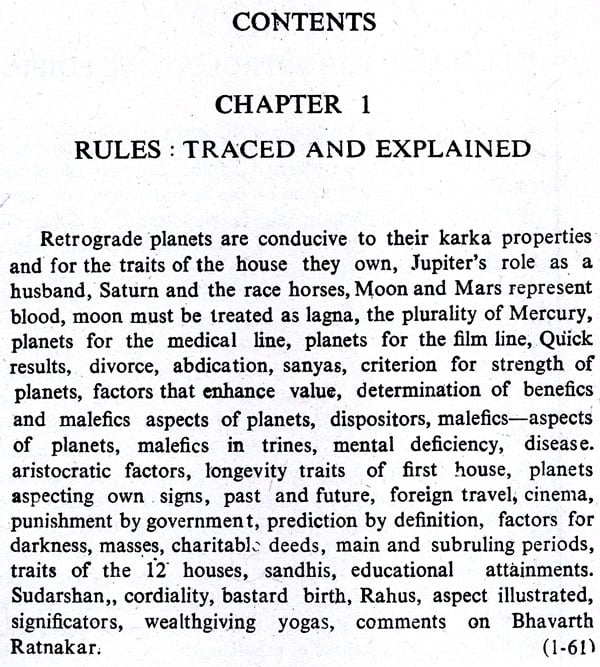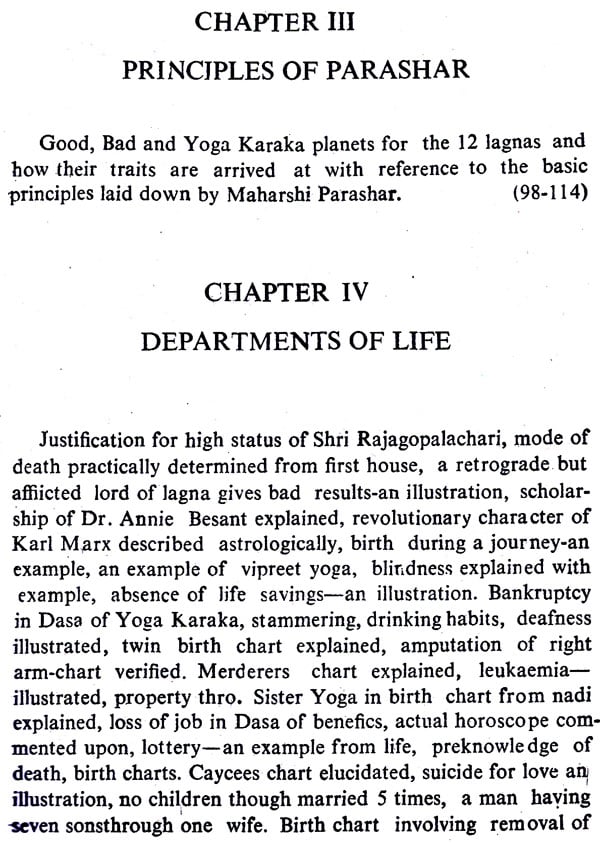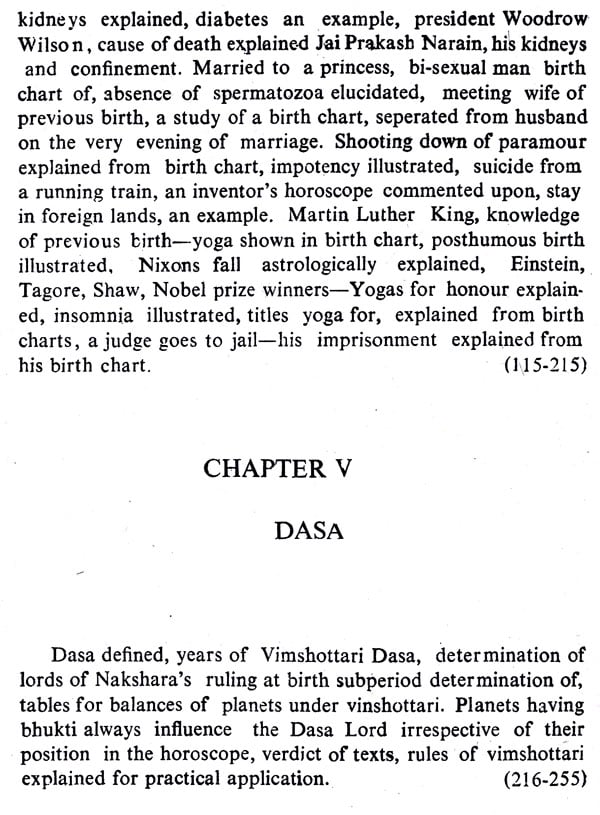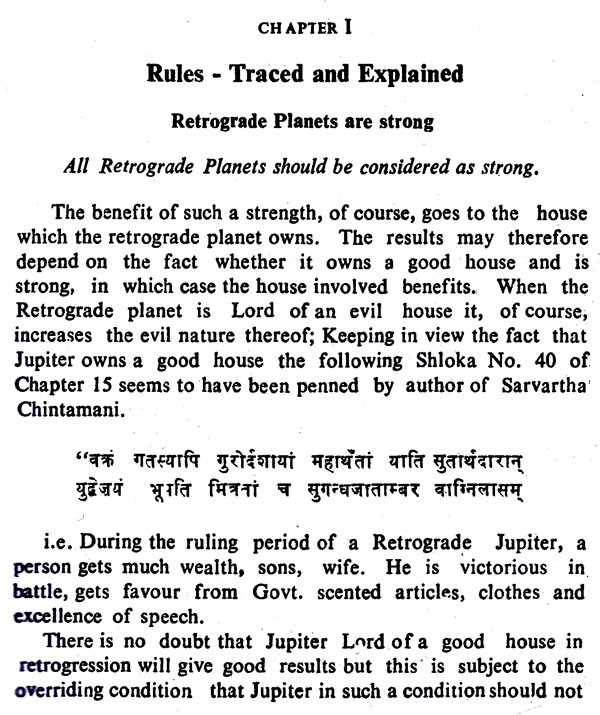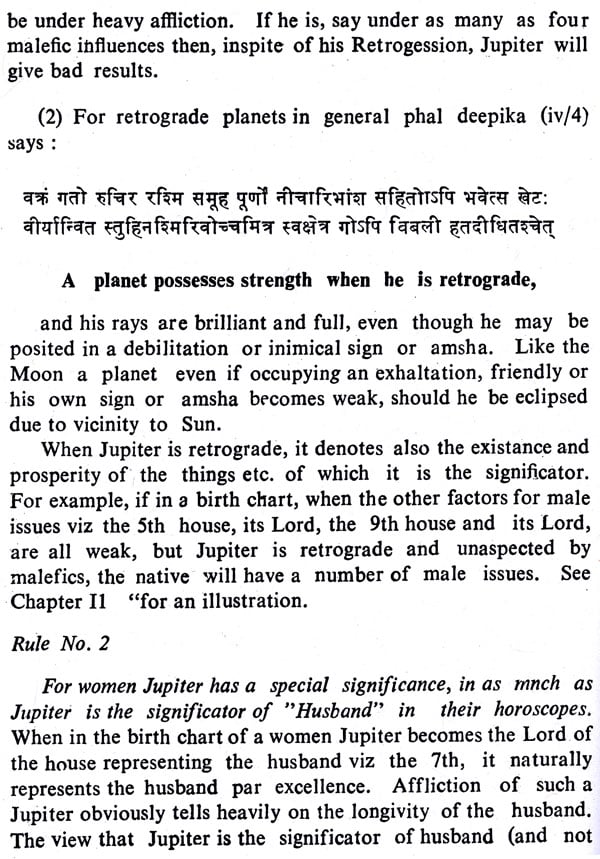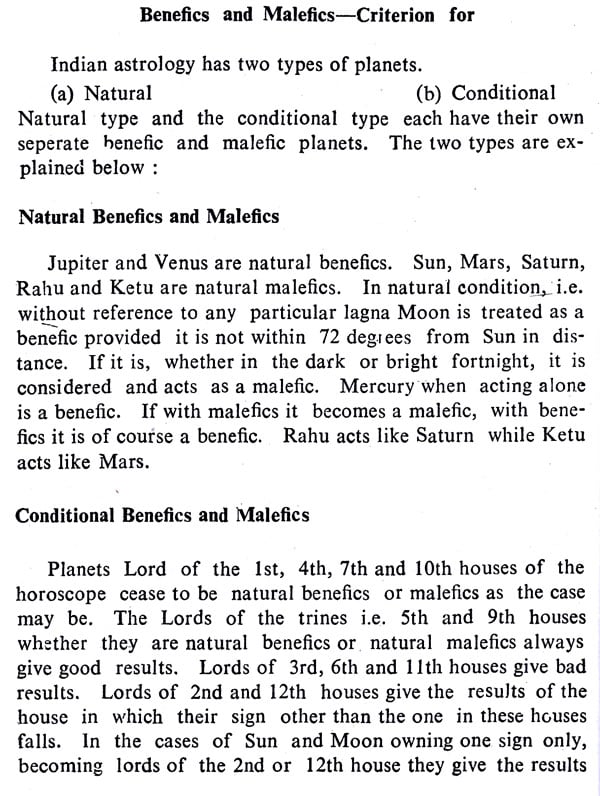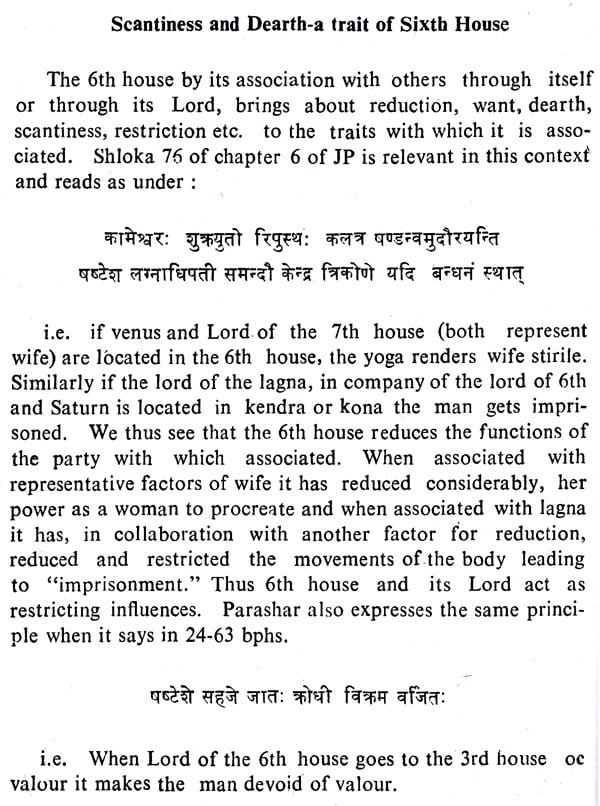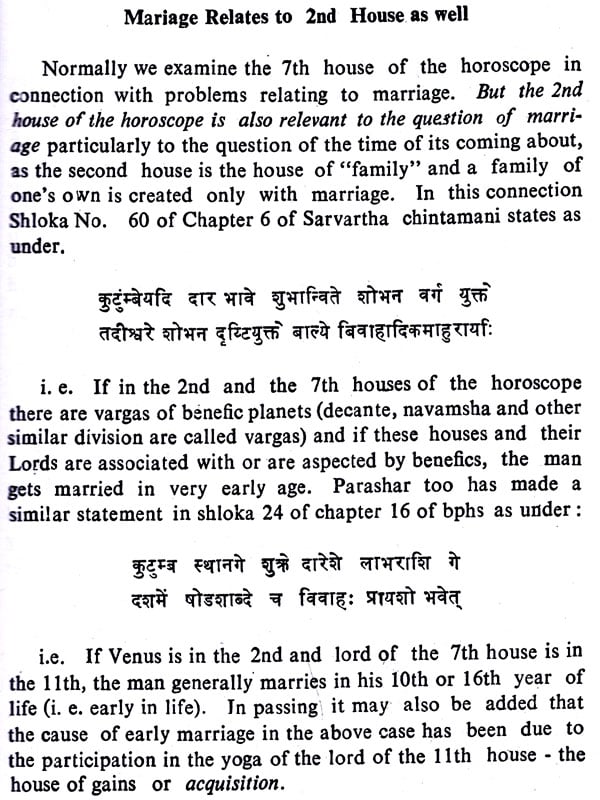
Art of Prediction
Book Specification
| Item Code: | NAQ797 |
| Author: | J. N. BHASIN |
| Publisher: | SAGAR PUBLICATIONS |
| Language: | English |
| Edition: | 2019 |
| ISBN: | 9788170822349 |
| Pages: | 312 |
| Cover: | PAPERBACK |
| Other Details | 7.00 X 4.70 inch |
| Weight | 270 gm |
Book Description
The entire approach to this work has been "prediction" oriented. To start with the student has been furnished quite a number of most precious rules in order to equip him with a thorough grounding in the principles of prediction, which have all been explained and substantiated by reference to original standard texts.
The practical application of these rules has then explained by citation of over 112 birth charts from actual life, dealing with all of its important aspects such as longevity, health, wealth, education, marriage, children married life, ruling powers, public service, diseases, imprisonment and with such subjects as adultry drunkardness, bastard birth, posthumous birth, birth in a train, divorce, deafness, discoveries, impotency, insolvency, judgeship, martyrdom, paramour, merderers, suicide, bi-sexual organs, spernnatozoa etc. etc. The idea in each case has been to enable the student to predict for himself. Thereafter the rules of vinshottari have been.given with special reference to the use of transits to pin point the date of occurrence of events-a phase of astrology illustrated and discussed in detail for the first time.
1. Astrology is both a science and an art. It is science in the sense that it is based on the pure science of astronomy and mathematics and an art in the sense that it requires sufficient practice to give adequate results. The mathe-matical portion of astrology is comparatively easier, as most of its requirements are already available to us with-out much labour. Unlike old days, an astrologer is not called upon these days, to work out the longitudes of the heavenly bodies himself. These are easily available in an up-to-date form in modern ephemeris, and only have to be culled out. But the art portion of astrology requires much time, constant practice and devoted attention for a correct appraisal of the birth chart.
2. While writing this work it has been presumed that the student is already familiar with the most elementary knowledge concerning astrology such as the names of the 12 signs, names of planets etc. Barring such type of most elementary knowledge all other essential rules of astrology have been incorporated in this work to prepare the student for the actual task of interpretation of a birth chart.
3. care has been taken that while laying down the rules of the science the-authority of the standard texts is not lost sight of. For every rule supporting references has been cited from such standard works as brihat parashar horoshastra, brihat jatak, phal deepika, uttar kalamrit, sarvarth chintamani prashna marg, bhavartha ranakar, saravali, jatak parijat, chandra kala nadi etc.
4. While elucidating the rules of astrology particular attention has been paid to such rules as are either of more relative importance or are of a somewhat controvertial nature. For example, the far reaching effects of the aspects of nodes-Rahu and Ketu, the altogether changed effects of planets owning signs occupied by other planets, the metamorphosis of benefits under heavy afflication, the seperative effects of sun, saturn and Rahu, the killing effects of mars and Ketu etc. have been prominently brought out into focus along with other normal important rules.
5. The karaka properties of the planets have been dilated upon with the primary object of using them as main instruments of divination in the various fields of human activity. Every subject of human interest relates to a parti-cular house of the horoscope and its lord and has a karka or significator. Karakas, with the houses they relate to have been listed, in order to be of help in the actual task of prediction.
6. A practical knowledge in the art of prediction is possible only when the application of the astrological laws is understood by reference to the horoscopes of peoples from all walks of life. In order, therefore, to impart practical knowledge to the student a vast number of birth charts belonging to prominent personalities have been included in this study. These birth charts have been studied from different angles such as longevity, health, wealth, ruling powers, social service, comfortable living, luxuries and the line of profession, and with reference to the practical application of the rules already learnt in in the matter. The idea of such a study has been to create the ability in students to ascertain for themselves the Promises of good or bad events on the basis of the various patterns and ruled.
7. Having prepared the student to undertake the task of prediction, the next step undertaken has been to acquaint him with the rules of dasa and bhukti, both mathematical and interpretative. The rules for the application of the vimshotmri dasa system have been explained in a practical manner with reference to well known birth charts and their equally well known events.
8. The last special point dealt with in this book has been to explain in detail with practical examples the actual application of the "transit" system to the bhukti periods with a view to pin point the actual-dates of events.
9. Thus the book is "prediction" oriented and is intended to enable students to have all the material in one place so as to facilitate their attempts at prediction. It is hoped the book will serve this special purpose for which it has been written.
**Contents and Sample Pages**
